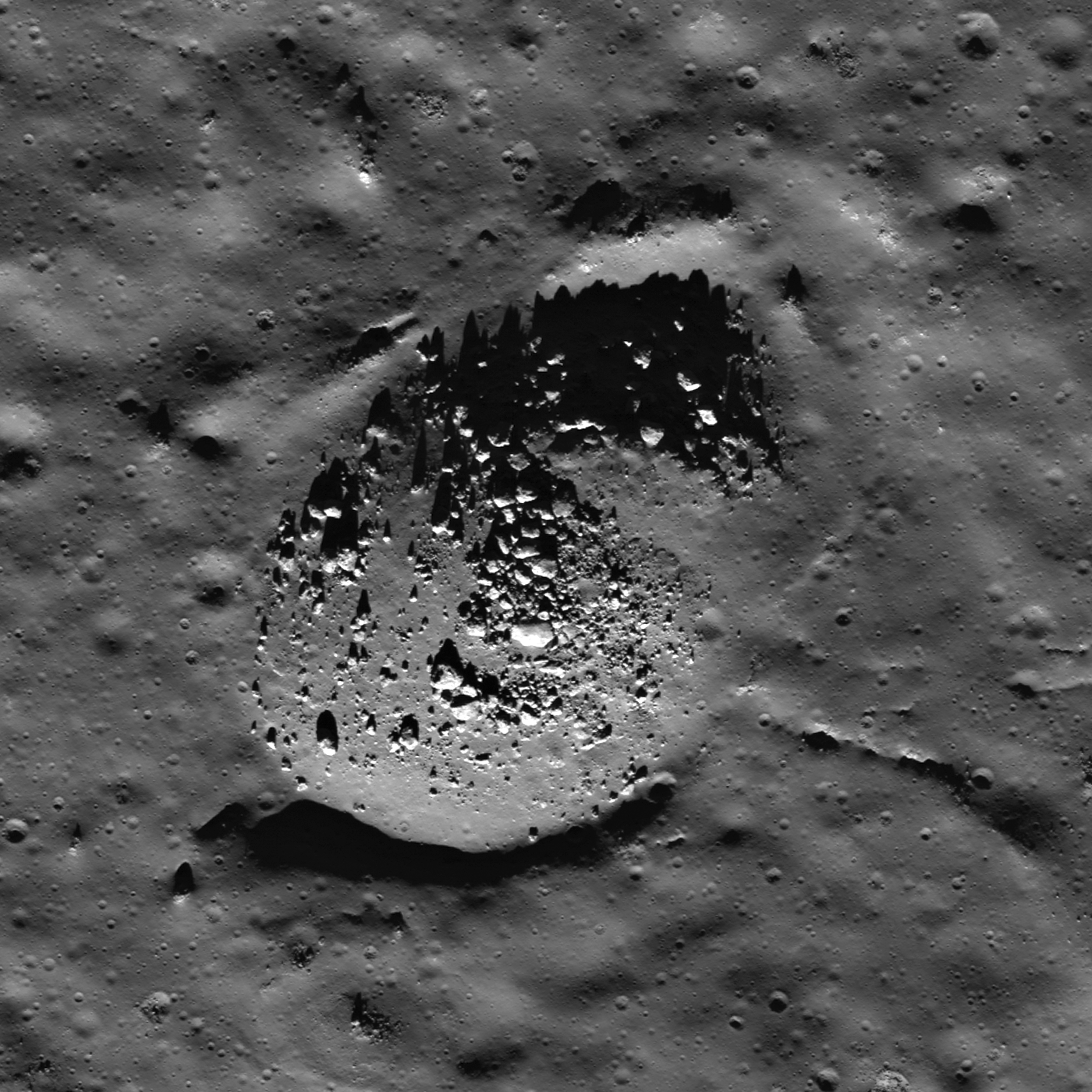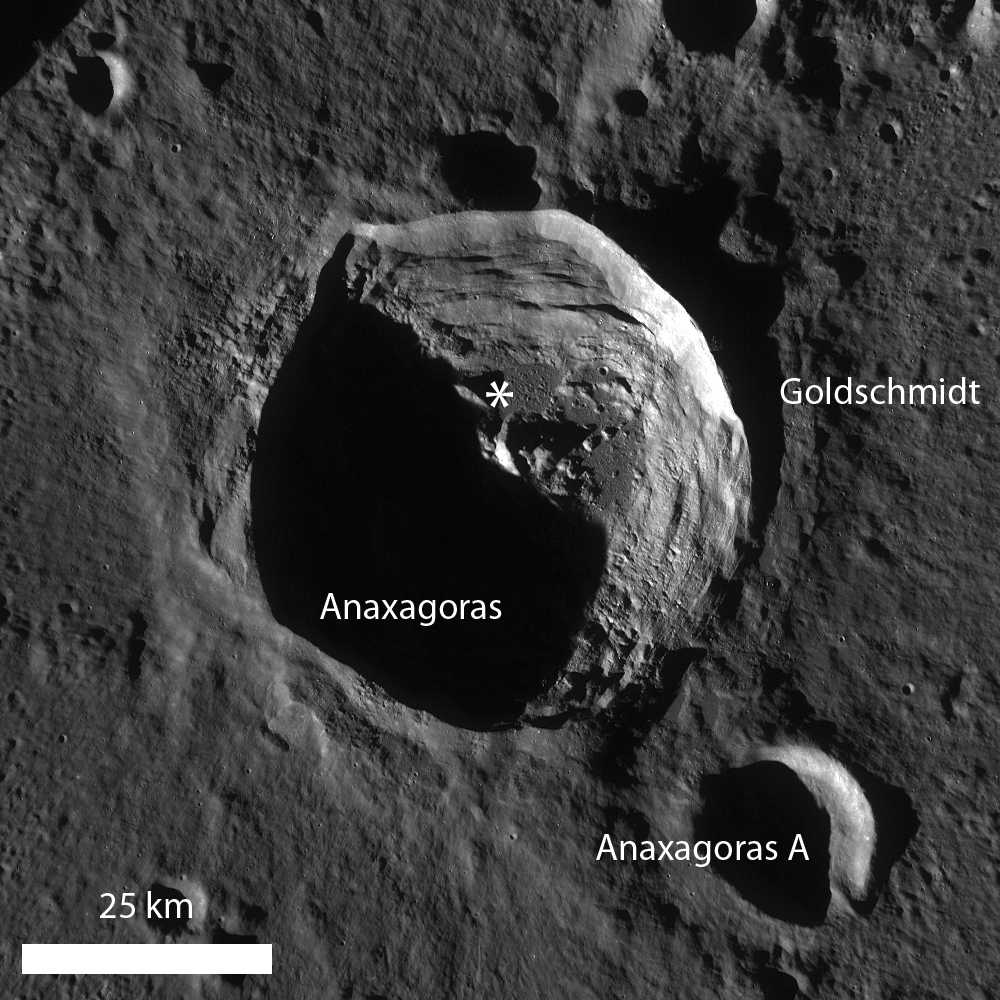
Anaxagoras, 50 km diameter, is a Copernican-aged crater located on the lunar far side. A previous post examined exposed bedrock in its central peak and mentioned the impact melt-covered floor. Impact melts are exciting to lunar geologists not just because the melt ponds and flows are beautiful, but because samples of impact melts can provide a specific and accurate age of crater formation through radiometric dating.
Much of the impact melt on the floor of Anaxagoras is smooth, but there are some places with cracks or negative-relief features. These cracks and pit-like features probably formed during cooling of the melt as the material fractured, similar to the way scientists think the natural bridge in the King crater melt sheet formed. We simply do not know for certain. Additionally, there are several hills and bulges that are covered with clusters of boulders. There are no impacts in the melt sheet that might account for the boulder clusters, thus a possible explanation is that the boulders are eroding out of the impact melt that covers these hills. These boulders look similar to boulder clusters eroding out of wrinkle ridges in the mare; are they the result of a similar process? This observation suggests that perhaps erosion proceeds preferentially on the steeper slopes of bulges in the melt sheet and ridge crests of wrinkle ridges to produce boulder clusters. But why are boulders only eroding from these bulges? There are other steep slopes nearby, but these slopes do not have boulders. There may be a simple explanation for the presence or absence of boulders in the Anaxagoras melt sheet and along wrinkle ridge crests, but further observations and analyses are required. Certainly, this is another mystery waiting for future lunar explorers!
Discover the beauty of the Anaxagoras impact melt sheet for yourself in the full LROC NAC image!
Related Posts: Anaxagoras A at Sunrise
Published by Lillian Ostrach on 31 May 2011
